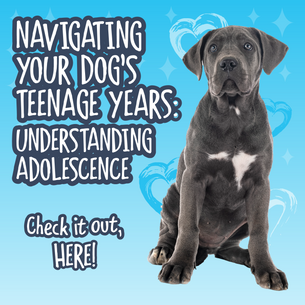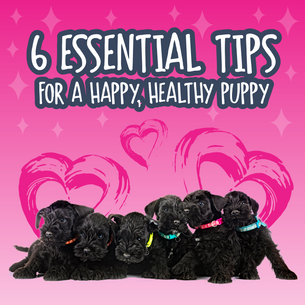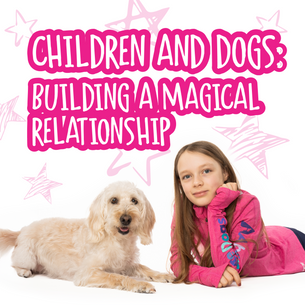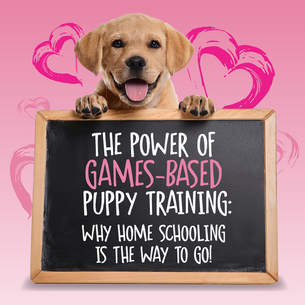Life can be tough when your dog has behaviour problems.
Sometimes the lunging, barking, pulling on lead, inability to settle, destruction, whining, and pacing just reaches that stage where you put your head in your hands and think:
IS MY DOG JUST CRAZY?
Is calmness something that just seems like an impossible dream? Do you feel like your dog was born without an off switch?
Let us assure you: your dog is not crazy. Calmness is very possible no matter how difficult the behaviour problem might be. And they definitely have the ability to switch on and off.
You just need to learn how to manage their “arousal level”
This is the degree of activation and intensity of your dog’s brain. And whenever you have a struggle like overexcitement, barking and lunging or simply not listening to you, it’s all because their “arousal level” is not matched to the situation.
The Truth about Dog Behaviour Problems
The truth is that the things we label as “problem” behaviours are really just dog behaviour. They are your dog’s way of communicating that something in their world isn’t right. They don’t want to behave that way.
Unfortunately, all too often we try to “manage” these behaviours rather than looking beyond to what is causing them. Yet they present an excellent opportunity to really deep dive into the way our dog lives, to work out what is best for them, what they love, what they hate, what works for them, how they live with us and how we can make their lives the best, healthiest and most enjoyable that they can be.
If we look and listen, we will often find that the concept lacking in the dogs who are trying to communicate so loudly with these behaviours is calmness.
How to Create a Calm Dog
Many of the so-called problem behaviours indicate that your dog is having difficulty with their arousal level. The excitement, drive and desire that underlie the behaviours are not bad - they are just poorly managed. You want a dog who is able to switch on so that they want to work, play and train with you, but you also need them to be able to switch off when it is time to relax.
The problem here isn’t that your dog doesn’t have an off switch. They just can’t access it. And no amount of attempted management by you of the situation is going to be as effective as your dog being able to switch themselves off. So don’t just try to manage: teach!
Teach them calmness and you will have a dog who is ready and able to deal with whatever life throws at them.
1.The Calmness Triad
The Calmness Triad provides an excellent framework through which to teach your dog calmness.

We teach our dogs to be calm by rotating them through the Calmness Triad by:
- working with them on their Calmness Protocol by feeding them when they are calm, timing feeding with external distractions, practising delivering rewards in a calm manner
- providing them with Passive Calming Activities such as scatter feeding, meaty bones, filled Kongs, treat balls, scenting, dehydrated treats, filled tracheas, puzzle feeders
- providing our dogs with appropriate Rest in crates, pens, rooms, or on raised beds
It is not healthy for our dogs to live lives where they are permanently “on”. Introducing the Calmness Triad to your dog’s daily living will massively improve the quality of their life and hugely boost their ability to cope with anything that they encounter throughout the day.
2.Boundary Games
But what if your dog simply won’t settle? How do you get your dog to stay in their rest place and rest?
You need to put value into these places of rest and into the act of resting on them.
So how do we do that? Well, that is where Boundary games come in.
Boundary games are simply a way of teaching your dog how to relax on a boundary. That might be on a bed or in a crate.
These games put you completely in control of your dog’s on/off switch, leading to a longer, happier, healthier life for your dog, and a happier, easier, less stressful life for you.
The Key Benefits of Boundary Games:
- Promote and develop impulse control
- Balance and level out arousal
- Boost motivation
- Decrease arousal
- Promote calmness
- Manage your dog on a practical level
- Prevent unwanted behaviours such as jumping up, counter surfing, charging at the front door, etc.
- Improve behaviour and manners
- Assist in management of multi-dog households
- Enhance your overall relationship with your dog
Playing Boundary games will take you through the Calmness Triad with ease. You will work on your Calmness Protocol by feeding when they are calm, massively reward your dog for choosing to rest appropriately, and put huge value into their places of rest by providing them with Passive Calming Activities such as scatter feeding in their place of rest.

Boundaries are how we build a calm framework for our dog’s life and daily living experience. No dog wants to live with a permanently full stress bucket and with Boundary games, they don’t have to.
Getting Started with Two Boundary Games you can Play Today!
Getting started with Boundary games is super easy. One of our favourite starter games for boundaries is Reward Nothing.
1.Reward Nothing
In this game, you are rewarding your dog for not reacting. Using food from your dog’s daily allowance, feed promptly but calmly when anything occurs that would usually trigger an over excited response from your dog.
The key here is to get in quickly with the food before they begin reacting. You have to reward while they are still calm. Waggling a piece of food in front of your dog’s face while they are reacting in an attempt to distract them is not the same thing! Get in quickly and feed them while they are doing nothing. The aim is to develop a reaction that when something exciting happens, your dog remains calm and turns to check in with you.
2.Love that Boundary
Another key benefit that Boundary games provides for working through the Calmness Triad is putting value in appropriate resting places/boundaries. It is super easy and super fun - give it a go!
- Pick an appropriate boundary - raised beds work really well for this as they provide very clear criteria for the dog - it is easy for the dog to know when they are or are not on the bed. Reward any interaction with the bed or boundary (e.g. looking towards, stepping towards, putting a paw on, etc.).
- Allow your dog to make the choice to approach the bed with no verbal cue. You want your dog to make the choice to go there.
- Feed generously for being on the bed. Drip feed to the bed, rather than directly to the dog. Feed for calmness. Feed slowly.
- Release your dog from the bed with a cue such as “okay” or “break”. Throw food away from the bed a moment after the verbal release cue.
- Then wait for your dog to choose to orient towards, approach, or return to the bed. Don’t cue the behaviour. Let your dog make the choice. When they do, reward hugely. You’ll find your dog is soon popping straight back onto the bed as they know that is where the reward happens.
- Once your dog values being on the bed, you can start to build up duration on the bed.
Calmness is Key to Solving Dog Behaviour Problems
So, no matter how tough things get and whatever seemingly crazy behaviour your dog presents you with, remember that there is a message in it. Calmness is key to a relaxed, easy, fun life with your dog and it is 100% a skill that can be learned. Use Boundary games to work through the Calmness Triad and you will be well on your way to having a dog who is cool with whatever the day throws at them.
Take action and play some games and - if you haven’t already - get yourself access to the Boundary Games digital download programme! We want to hold your hand through this process and remove that label of “behaviour problem” that someone has put on you and your dog!




